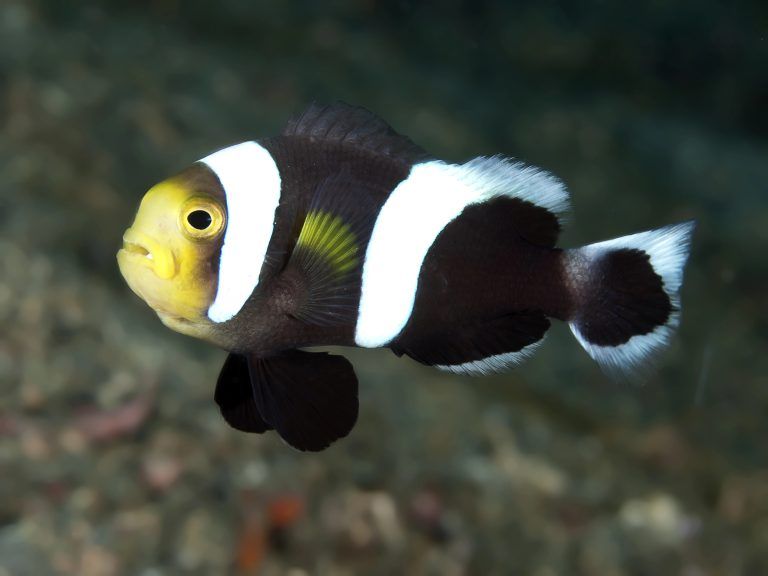The Cherub Angelfish (Centropyge argi), also known as the Pygmy Angelfish, is a small but bold member of the dwarf angelfish family. Native to the tropical Western Atlantic, particularly the Caribbean and Gulf of Mexico, this species is admired for its deep blue body accented with a golden face and vibrant sapphire highlights. Despite reaching only about 3 inches in length, the Cherub Angelfish has a reputation for being lively, hardy, and sometimes feisty, making it a popular choice among saltwater hobbyists. With the right aquarium setup, diet, and tank mates, this fish can be both a hardy and rewarding addition to a marine community or reef tank. This guide will discuss the care requirements to keep a Pygmy Angelfish happy and content in an aquarium.
Aquarium Requirements
Cherub Angelfish (Centropyge argi) are among the smallest marine angelfish, reaching only about 3 inches in length, which makes them attractive for smaller setups. However, they need room to establish territory and graze, so a minimum tank size of 55 gallons is recommended for this fish species. In larger aquariums, they tend to be more comfortable and less aggressive. Plenty of live rock should be provided for natural grazing surfaces. Pygmy Angelfish use live rock to graze algae, as hiding spaces, and to define territories. An open swimming space is also important, as these fish are active. A secure lid is necessary since they may dart upward when startled.
Is the Pygmy Angelfish Reef Safe?
The pygmy angelfish is often considered “reef safe with caution.” While many individuals coexist peacefully in reef tanks, their natural grazing behavior makes them unpredictable around corals. They are known to nip at large-polyp stony corals, soft corals, and clam mantles, though some hobbyists report little to no damage. The likelihood of coral-nipping tends to rise if the fish is underfed or lacks adequate algae and live rock to graze. They are generally safe with invertebrates like shrimp, crabs, and snails.
Water Parameters
These fish thrive in stable, well-maintained saltwater conditions. They prefer a temperature range of 72–78°F, salt levels with a specific gravity between 1.020–1.025, and pH between 8.1–8.4. Ammonia and nitrites should always read zero. Nitrates should be kept as close to zero as possible, with only trace nitrates tolerated. High water quality is crucial because they are sensitive to fluctuations and poor conditions. A protein skimmer and regular water changes will help maintain the clean environment they require. For salinity testing tools, take a look at “Different Salinity Reading Tools for Saltwater Fish Tanks”.
Food & Diet
Cherub Angelfish are omnivores with a strong preference for algae. In the wild, they graze constantly on microalgae and detritus, so in captivity, they should be offered a varied diet to mimic this behavior. Quality marine angelfish preparations, algae-based flakes, and pellets should be supplemented with frozen mysis shrimp, brine shrimp, and other protein-rich foods. Sheets of nori or spirulina-based foods will help meet their herbivorous needs. Frequent small feedings are better than one large feeding, and they should ideally have constant access to grazing surfaces on live rock.
Tank Mates
Despite their small size, Pygmy Angelfish have a reputation for being feisty. They are territorial and semi-aggressive, especially toward other dwarf angelfish and similarly shaped species. They can be kept singly in most tanks, but a bonded male–female pair may coexist in larger aquariums. They generally do well with peaceful to moderately aggressive community fish such as wrasses, gobies, blennies, tangs, and clownfish. However, they should not be housed with timid species, as their bold nature may cause stress. Careful consideration should be given before mixing them with other angelfish species, as aggression is likely between the fish.
Breeding
Breeding cherub angelfish in captivity is challenging but has been documented. They are protogynous hermaphrodites, meaning they start life as females, with the dominant individual transitioning into a male. In the wild, they form harems, with one male presiding over several females. Spawning typically occurs at dusk, with eggs released into the water column, making them difficult to collect and rear in captivity. Rearing the larvae requires specialized systems and planktonic food sources, which are beyond the scope of most home aquarists.
Final Notes
The Pygmy Angelfish is a hardy, active, and striking marine fish, making it a popular choice for saltwater enthusiasts. Its small size allows it to fit into setups that would be too tight for larger angelfish, though its territorial streak requires thoughtful stocking. While not guaranteed reef safe, many aquarists successfully keep them in reef tanks by providing sufficient food and grazing opportunities. With proper care, stable water conditions, and a carefully chosen community, the Pygmy Angelfish can thrive for years and become a bold centerpiece in a saltwater aquarium.
Thanks for clicking this tab, this is planned for a future feature of this website!



